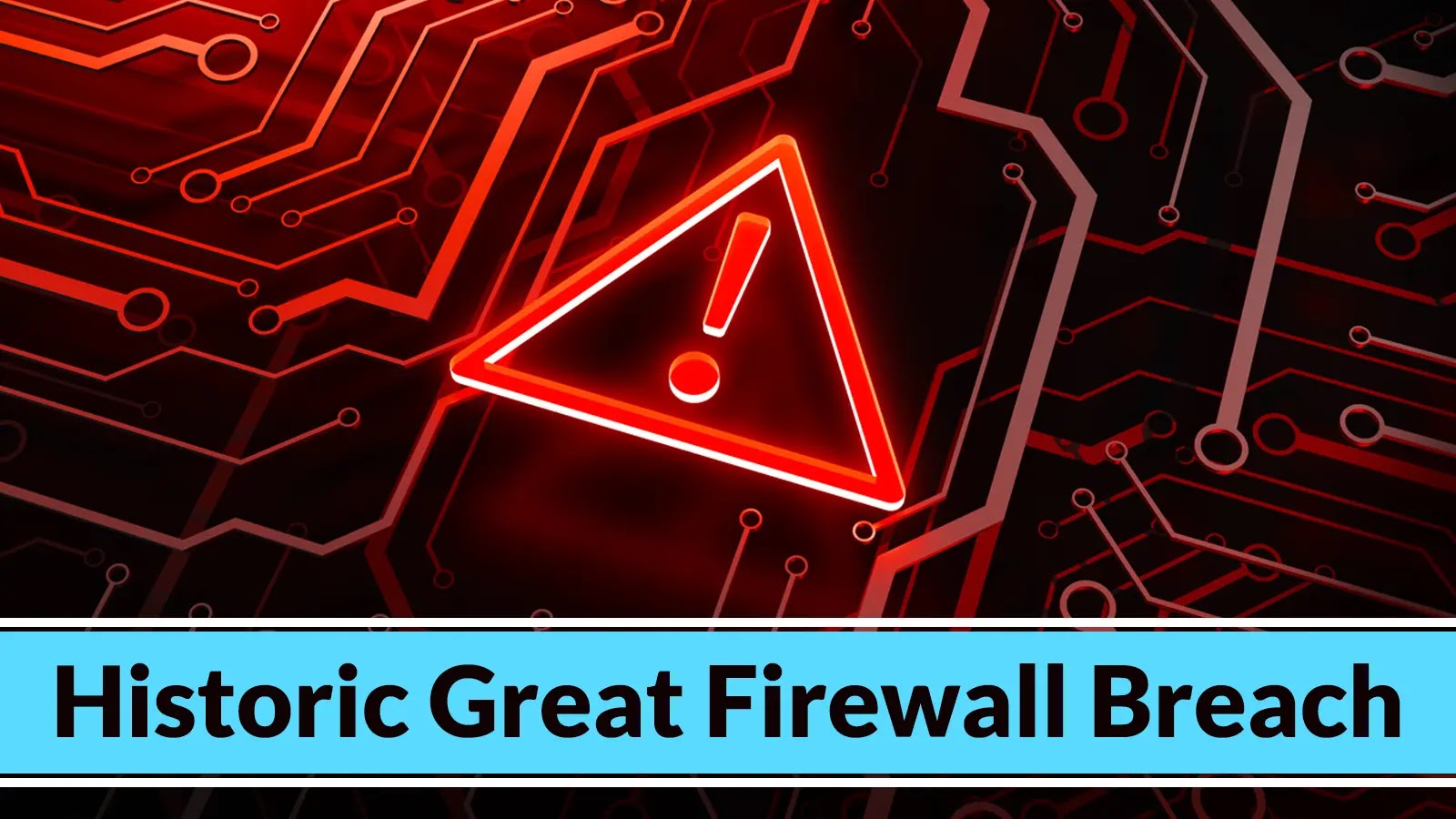
Historic Great Firewall Breach – 500GB+ Censorship Data Exposed
A Digital Earthquake: The Great Firewall Falls
In an unprecedented cybersecurity incident that reverberated across the globe, September 2025 witnessed a seismic event: a historic breach of China’s formidable Great Firewall. More than 500 gigabytes of internal data, a treasure trove of operational intelligence, were exposed. Security experts are, without exaggeration, labeling this one of the most consequential leaks in the history of digital surveillance. This isn’t just about data; it’s about the intricate machinery of state-sponsored internet control laid bare.
This massive exposure didn’t just skim the surface. It delved deep into the very core of the Great Firewall’s operations, impacting China’s extensive internet censorship infrastructure. The implications of such a breach are vast, affecting everything from geopolitical intelligence to the future of digital freedom. For cybersecurity professionals, it offers an unparalleled, albeit illicitly obtained, look into sophisticated state-level censorship mechanisms.
Unpacking the 500GB Payload: What Was Exposed?
The sheer volume of the leaked data is staggering, comprising over 100,000 individual documents. This wasn’t a superficial data dump; it was a deep dive into the architecture and daily operations of one of the world’s most powerful censorship systems. The contents paint a detailed picture of how the Great Firewall functions, revealing its internal mechanisms and strategic priorities. Key categories of exposed data include:
- Internal Source Code: The very blueprints of the censorship and surveillance tools, offering insights into proprietary filtering algorithms and techniques.
- Work Logs: Daily operational records, potentially detailing specific targets of censorship, monitoring activities, and internal communications regarding policy enforcement.
- Configuration Files: Critical settings that dictate how filtering rules are applied, revealing the technical parameters and thresholds used for blocking content and services.
- System Schematics: Detailed diagrams of the network infrastructure, sever locations, and interconnections that form the backbone of the Great Firewall.
- Censorship Rulesets: The explicit directives and keywords used to block foreign websites, social media platforms, search terms, and specific types of content.
- User Tracking Data (Potential): While not explicitly confirmed, such a comprehensive leak often includes methodologies or actual data points related to user tracking and identification within the Chinese internet space.
Each piece of this exposed data offers a unique perspective on the operational nuances of sophisticated state-controlled internet infrastructure. Understanding these elements is crucial for anyone studying or combating digital authoritarianism.
The Impact: Geopolitics, Cybersecurity, and Digital Freedom
The repercussions of this Great Firewall breach extend far beyond a technical understanding of its mechanisms. This incident has profound implications on multiple fronts:
- Geopolitical Intelligence: Foreign intelligence agencies now possess an unprecedented view into China’s cyber capabilities and strategic priorities regarding information control. This knowledge can influence international relations and cyber defense strategies.
- Cybersecurity Vulnerability Assessments: The exposure of source code and configuration files could potentially reveal hitherto unknown vulnerabilities in the Great Firewall’s architecture, opening avenues for bypass techniques or further exploitation.
- Human Rights and Digital Freedom: Activists and researchers can now better understand the scope and methods of censorship, potentially leading to more effective strategies for evading controls and advocating for internet freedom.
- Erosion of Trust: For the general public within China, while official acknowledgment may be limited, any leaked information could undermine trust in state-controlled digital systems, particularly if sensitive data was exposed.
This breach represents a significant shift in the balance of information, providing an unprecedented analytical opportunity for cybersecurity researchers globally.
Remediation Actions and Lessons Learned
While this breach pertains to state infrastructure, the lessons are universally applicable to any organization managing sensitive networks and data. For organizations facing similar large-scale data integrity challenges, immediate remediation and long-term strategic changes are paramount. Although a specific CVE has not yet been assigned for the root cause of this breach, the principles of robust cybersecurity remain relevant.
| Control Area | Actionable Advice | Relevant Tools/Practices |
|---|---|---|
| Access Control & Authorization | Implement strict Zero Trust principles. Regularly audit user accounts, permissions, and roles. Enforce Multi-Factor Authentication (MFA) everywhere possible, especially for administrative access to critical infrastructure. |
|
| Network Segmentation | Isolate critical systems and data repositories from less secure network segments. Micro-segmentation can prevent lateral movement in the event of a breach. |
|
| Endpoint Security | Deploy advanced endpoint detection and response (EDR) solutions. Maintain up-to-date antivirus and anti-malware software on all enterprise assets. |
|
| Security Monitoring & SIEM | Implement comprehensive logging and centrally monitor all security events. Utilize Security Information and Event Management (SIEM) systems for real-time alerting and incident correlation. |
|
| Vulnerability Management | Conduct regular vulnerability scanning and penetration testing. Prioritize patching critical vulnerabilities promptly. |
|
| Data Encryption | Encrypt data at rest and in transit. This minimizes the impact if data is exfiltrated, rendering it unreadable without the decryption key. |
|
| Incident Response Plan | Develop, regularly test, and update a comprehensive incident response plan. Ensure clear communication channels and roles are defined. |
|
The Future of Digital Surveillance and Cybersecurity
This historic breach of the Great Firewall serves as a stark reminder that no system, regardless of its sophistication or resources, is impervious to attack. The implications for nations, corporations, and individuals are profound. It underscores the ongoing, high-stakes battle between those who seek to control information and those who champion open access.
For cybersecurity professionals, this event provides invaluable real-world data on state-level cyber operations and advanced persistent threats (APTs). It highlights the critical need for continuous vigilance, adaptive security strategies, and a proactive approach to defending digital infrastructure against increasingly sophisticated adversaries. The Great Firewall may have appeared impenetrable, but its 500GB leak proves that even the most robust digital fortresses can have fundamental weaknesses.





